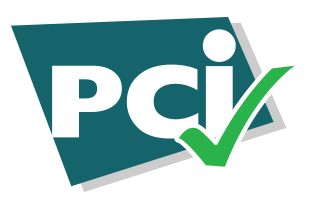1. XML Settlement Are Used Globally
The key benefit here is that once you have developed a community investment program with Treasury Bank and submitted your Money Market Account information and supporting Bank payment format then you have done the bulk of the hard work. For example, once you have created your banks compliant payment or direct debit format you are ready to receive your grant. For direct debits most banks have 1 format, with slight variations depending on the type of direct debit you choose. (See Settlement Services)
XML Settlement provides consistent, rich and structured data for its cash position, that can be used for every kind of financial business transaction. Treasury Bank can create XML Settlement format that can be tweaked and amended to handle payments globally – for example across countries in Asia-Pacific, North America, Latin America and Africa.
In short, once your bank haven given your investment its XML Settlement format the majority of the hard work is done.
2. XML Settlement are Supported by Most Banks
Even thou this is a correct, but not all banks support the XML payments format – but this is where your investment can start to pick and choose which banks you want to do business with. Some bank use specific formats for payments, which are proprietary formats which it only used just for that bank reporting. In the past it was too complicated to change payment formats and as a result you ended up ‘sticking’ with your existing banking provider. Treasury Bank XML Settlement removes that technology ‘stickiness’ that banks previously had with their customers.
3. XML Settlement Simplify Development and Support
As mentioned previously, XML Settlement can be used globally and by most banks – that gives you the opportunity to reduce the number of people (business and IT) developing, maintaining and supporting payment file formats in your investment settlement. You no longer need people to know the specific payment file format in different countries for example, Treasury Bank core team understands XML payments and they should be able to support the payment formats globally. Since XML is a global standard, Treasury Bank can easily make whatever XML changes you need in a relatively short amount of time. That ease of maintenance/development is not always available with old proprietary formats.
Some Bank ERP systems are able to process XML payment file formats ‘out of the box’. That doesn’t mean you can use the XML Settlement format straight out of the box, it is highly likely that your bank IT team will need to do some tweaking. Both to make sure the format adheres to your business requirements and meets your banks expectations, which avoid developing something from scratch.
4. XML Payments Can Be Used For Most Payment Types
XML Settlement format can be used for the majority of payments that your investment is currently making – especially the high volume payments. XML Settlement can be used to initiate:
- Most domestic supplier payments – ACH (Automated Clearing House) type payments
- Cross border, priority payments or wire payments
- Payroll payments
You need to understand from your bank how they need you to populate the PAIN.001 XML format.
5. XML Payments Will Save You a Few Quid
Treasury Bank developer have to invest significant time, effort and resources in implementing XML Settlement for community investment programs reap the benefits:
- As you deploy new payment interfaces in another city or country, your development and testing times are reduced
- You no longer need lots of people to support different payment interfaces
- Depending on the channel that you use, by using Treasury Bank you can reduce your SWIFT charges by processing more of your payments through the cheaper SWIFT FileAct channel.
- You’re no longer thinking about a brand new interface each time, if you use XML Settlement it should be a case of modifying an existing template
6. XML Settlement Enables Payment Processing Efficiencies
With XML you can start to think how to improve the way in which you process payments at your Community Investment Program CIP. XML Settlement will typically require you to indicate you bank information using the ABA RTN BIC and IBAN code – of course, in Europe the IBAN is mandatory, but for the purposes of this post I’m thinking globally… This starts to standardize the:
- Information Treasury Bank need to collect in order to make payments
- Way in which you process payments
- XML Settlement file generated by Treasury Bank system
- Delivery of that XML payment to your banking partners
7. XML Settlement Can Be Delivered Across Multiple Delivery Channels
XML Settlement can be sent to your bank or your payment processing provider through a variety of channels
- File upload into a internet banking system
- FTP or secure-FTP (SFTP)
- Host to host channel
- SWIFT FileAct
- EBICS
- Multi-banking file upload
You need to work with your bank to figure out which is the best delivery channel for your CIP.
8. XML Settlement Enable Enriched Remittance Information to be Sent to Your Supplier
Through the XML Settlement Structured Remittance Tag and the Unstructured Remittance Tag we can send a lot more remittance information than previously to your suppliers. Suppliers can see which invoices you’re paying them, and it saves them calling your accounts payable department with queries and all of the associated time and effort that involves.
XML Settlement format can handle additional remittance information, because Treasury Bank is a clearing system when most bank are not. so, XML Settlement are Real Time and able to pass on the remittance information to the recipient suppliers fast and secure. Some banks and payment service providers have third party solutions that case pass this remittance information to your suppliers, but with Treasury Bank your investment suppliers are accountholders and payment are sent to your suppliers at the same time as your investment.
9. XML Settlement Give you the Ability to Privatize How Your Bank Processes and Reports Your Payments
In today supply change and bad actors, which is because payment file are processes through public open networks like ACH Fedwire employees, it expose private client and high network members to data infringement. XML Settlement is a direct point A to B data processing. This is enabled by indicating the appropriate values in the XML Settlement file that is generated – for example:
Private Protection – Reduce Internal and External Threats
- Create a governance and decision-making structure that enables the organisation to better handle risk and various threats
- Ensure cybersecurity is embedded into all new initiatives
- To help protect against cyber-security threats utilise AI (artificial intelligence), advanced analytics and any other tools
- Recognise the cybersecurity skills shortage and educate and train the appropriate teams in your organisation
- Create standards, procedures and training and ensure these are followed throughout the organisation
- Invest in RegTech solutions with a view to making compliance cheaper
Optimize – Use Technology to Improve Efficiency
- Implement robotic process automation (RPA) to lower the cost of high frequency manual roles
- Utilize big data to help modelling capabilities and support business decisions
- Create a strategy to strip out the old (legacy systems) and implement a new banking system
- Consider the utility model by working with others in the industry by creating economies of scale
- Identify blockchain opportunities
The above are just a few examples of how you can control the way in which your payments are processed. You need to work with your bank to understand the logic they use. Overall, it is pretty standard stuff. You just don’t have that level of control and flexibility over an old-school payment file format.
10. Treasury Bank Goal is to Standardize & Simplify CIP Settlement
The Treasury Bank Organization is responsible for promoting XML Settlement and simplifying the implementation thereof. In short, we are dedicated to making it easier for YOU to implement XML Settlement – the Treasury Bank Organization have indicated the standard version of XML payments (PAIN.001) to use along with country specific modifications. Most of the big banks support this, and are involved in the development of these standards.
Our team members are trying to do all of the hard work documenting the various in-country requirements, so you don’t have to!




